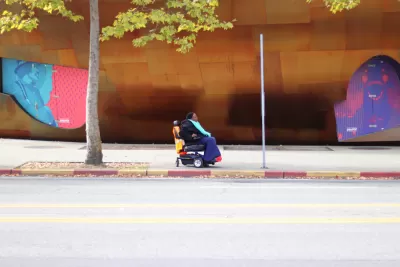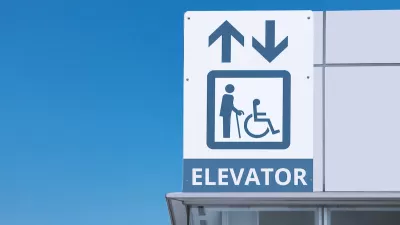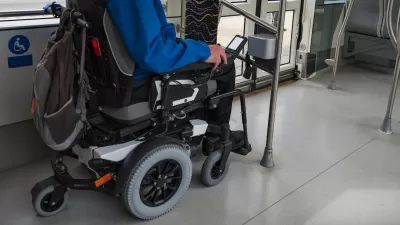Public transit agencies around the country have made a lot of progress in providing access for people with disabilities, but there is a lot of work left to ensure to the full freedoms of mobility.

The letter of the Americans With Disabilities Act law isn't always enough to appreciate the necessity of mobility and equal access for people with disabilities, say advocates as the historic law's anniversary approaches.
Matt Alderton writes for The Washington Post:
President George H.W. Bush signed the ADA into law on July 26, 1990. As the legislation’s 30th birthday nears, advocates say the increased mobility of Americans with disabilities is evidence that it was the right thing to do. That gaps persist, however, is a reminder that work remains.
The scale of the need is greater than many able bodied people recognize. "Nearly 25 million people have a travel-limiting disability, according to the Bureau of Transportation Statistics, which says 1 percent of all Americans — about 3.6 million people — are homebound because of a disability."
The article focuses mostly on the access to transportation required in the law, but those interested in more reading should also see in-depth coverage of the Curb-Cut Effect—a documented effect of multiple benefits from ADA improvements in the public realm.
FULL STORY: Nearly 30 years after the ADA, the nation’s transit agencies report successes and shortfalls

Planetizen Federal Action Tracker
A weekly monitor of how Trump’s orders and actions are impacting planners and planning in America.

Restaurant Patios Were a Pandemic Win — Why Were They so Hard to Keep?
Social distancing requirements and changes in travel patterns prompted cities to pilot new uses for street and sidewalk space. Then it got complicated.

Map: Where Senate Republicans Want to Sell Your Public Lands
For public land advocates, the Senate Republicans’ proposal to sell millions of acres of public land in the West is “the biggest fight of their careers.”

Maui's Vacation Rental Debate Turns Ugly
Verbal attacks, misinformation campaigns and fistfights plague a high-stakes debate to convert thousands of vacation rentals into long-term housing.

San Francisco Suspends Traffic Calming Amidst Record Deaths
Citing “a challenging fiscal landscape,” the city will cease the program on the heels of 42 traffic deaths, including 24 pedestrians.

California Homeless Arrests, Citations Spike After Ruling
An investigation reveals that anti-homeless actions increased up to 500% after Grants Pass v. Johnson — even in cities claiming no policy change.
Urban Design for Planners 1: Software Tools
This six-course series explores essential urban design concepts using open source software and equips planners with the tools they need to participate fully in the urban design process.
Planning for Universal Design
Learn the tools for implementing Universal Design in planning regulations.
Heyer Gruel & Associates PA
JM Goldson LLC
Custer County Colorado
City of Camden Redevelopment Agency
City of Astoria
Transportation Research & Education Center (TREC) at Portland State University
Camden Redevelopment Agency
City of Claremont
Municipality of Princeton (NJ)





























